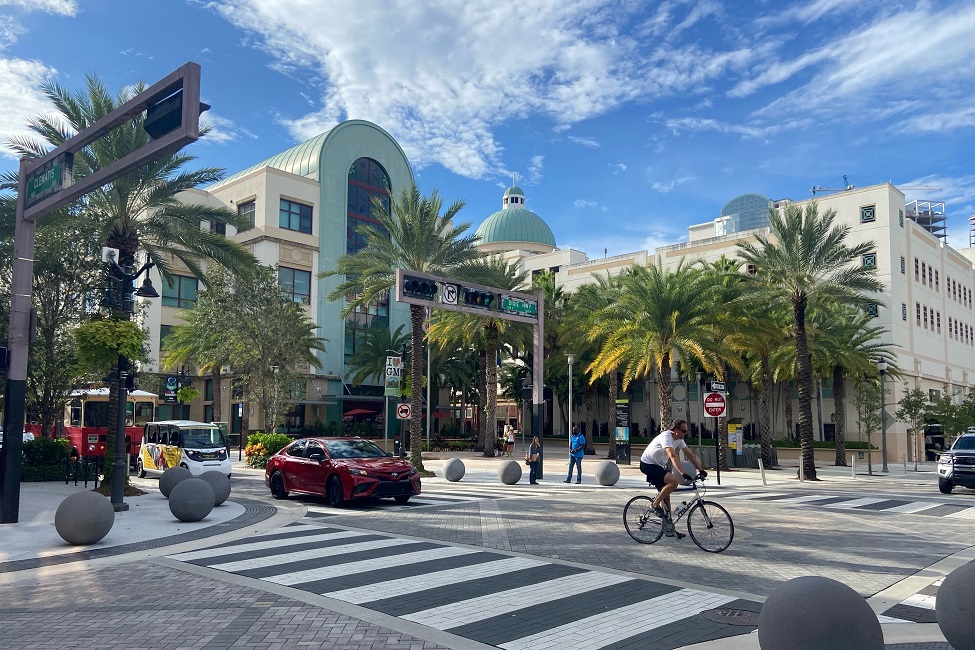America on the Move: How Urban Travel Has Changed Over a Decade

America’s urban travel trends show important variations in travel behaviors across income, home ownership, ethnicity, gender, age, and life-cycle stages.
A new Florida Atlantic University study on America’s urban travel trends shows important variations in travel behaviors across income, home ownership, ethnicity, gender, age, and life-cycle stages. The sixth in a series of studies compared changes in travel modes, trip frequency, trip distance and vehicle ownership among a range of socioeconomic groups using nationwide travel survey data since 1977.
The most notable trend, published in the journal Transportation Research Part D , reveals that although private automobiles continue to be the dominant travel mode in American cities, the share of car trips has slightly and steadily decreased since its peak in 2001. In contrast, the share of transit, non-motorized, and taxicab (including ride-hailing) trips has steadily increased.
The lowest income group (household income less than $25,000), who were more likely to be minorities and without cars, were heavily reliant on transit – especially buses – to fulfill their mobility needs. Their daily trip frequencies and daily miles traveled were considerably lower than those of higher income groups. Mobility challenges in this income group were more severe in small and mid-size cities, where the supply of transit is more limited than large cities.
“Examining differences in travel patterns can help policy makers to better evaluate the effects of existing transportation services and infrastructure developments, to identify the sub-groups that deserve special attention for future transport plans, and to design more sustainable and equitable transport policies at local, state and federal levels,” said John L. Renne, Ph.D., co-author, professor and director, Center for Urban & Environmental Solutions (CUES) in FAU’s Charles E. Schmidt College of Science .
Among the study findings:
- Non-Hispanic whites are the most auto-oriented ethnicity group, with 81.5 percent of their trips by automobile, followed by Hispanics with 80.2 percent of their trips by automobile.
- Hispanics are higher in carpooling (48 percent of their total trips), compared to non-Hispanic whites (41.3 percent).
- Blacks were the highest in bus transit trips (5.8 percent), and Asians were the highest in rail transit trips (2.2 percent). Asians also had the highest share of non-motorized trips (17.7 percent); Hispanics had the lowest share of non-motorized trips (13.1 percent).
- Females had slightly higher shares of automobile trips than males (80.6 percent vs. 78.7 percent); specifically, females had a higher share of carpools than males (45.2 percent vs. 39.6 percent), and males had a higher share of solo driving than females (39.1 percent vs. 35.4 percent). Males have higher shares of bicycle trips than females (1.6 percent vs. 0.7 percent).
- Non-motorized trips for whites and blacks are comparable (about 14 percent), however, whites had a much higher share of cycling trips than blacks (1.3 percent vs. 0.5 percent, respectively).
- Although the share of taxicab trips was comparable across different racial profiles, it was lowest among whites, at 0.5 percent.
- For homeowners, from 2009 to 2017, solo driving trips decreased from 42.3 percent to 40.1 percent, and carpooling trips increased from 43.8 percent to 44.7 percent. Renters exhibited the opposite trend: solo driving trips increased from 30.5 percent to 32.1 percent, and carpooling trips decreased from 41.6 percent to 38.8 percent.
- The average miles traveled per day for the lowest income group was 36 percent lower (14.3 miles vs. 19.5 miles) than the second-lowest income group ($25,000 -$49,999).
- The highest income group made 31.4 percent of the total peak-hour transit trips but only 22.1 percent of the non-peak-hour transit trips; the lowest income group made only 28.7 percent of the peak-hour transit trips but 43 percent of the total non-peak-hour transit trips.
- Most older adults heavily relied on driving and are not regular transit patrons, ride-hailing users, or cyclists.
Renne and Xize Yang, Ph.D., co-author, National University of Singapore, suggest many different factors may be contributing to this general trend of “peak and decline.” These include robust transit and non-motorized infrastructures in urban neighborhoods and college towns, higher gasoline prices, and the rise of online retailers such as Amazon and Uber Eats as well as shared mobility such as ride-hailing, bike and scooter sharing.
In addition, working from home and flexible working schedules have been gaining popularity. The share of Americans working from home increased from 3.3 percent in 2000 to 4.3 percent in 2009, and 5.2 percent in 2017. The researchers suggest post-covid American cities will see further increases in the share of working-from-home arrangements.
“Our study suggests that certain factors make automobile use particularly dominant in America. These include some combination of households earning more than $25,000, owning a home, owning two or more vehicles, and having children result in a strong propensity to use an automobile for the vast majority of trips," said Renne.
Researchers used the 2017 National Household Travel Survey (NHTS), which is the most recent nationally representative travel survey in the U.S. It was first released in 2018 and then updated in 2019 and 2020. They compared these variations in the 2017 NHTS with its predecessors, the Nationwide Personal Transportation Surveys (NPTS) in 1969, 1977, 1983, 1990 and 1995; and the NHTS in 2001 and 2009 based on earlier studies in this series.
-FAU-
Tags: faculty and staff | science | research